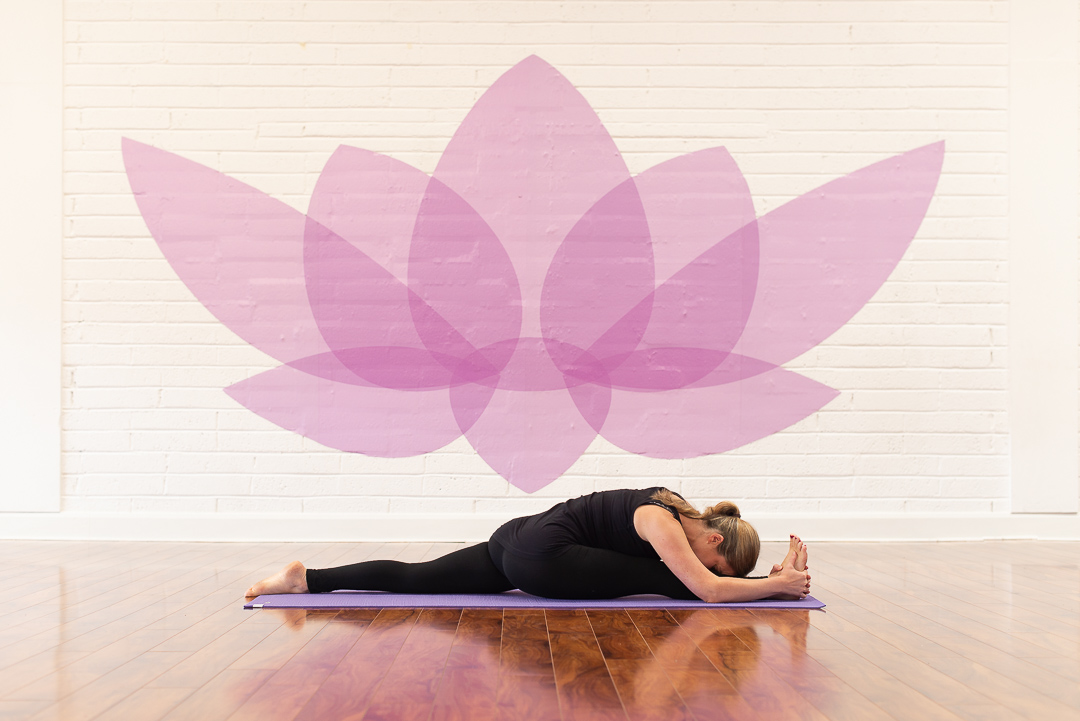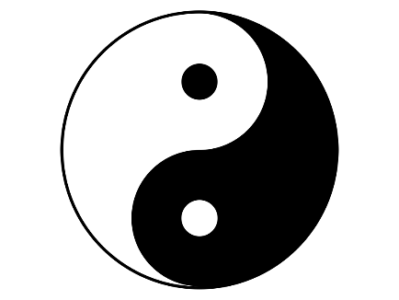What is Yin Yoga?

Written by Himalaya Yoga Valley Graduate and Yoga Teacher, Tomoe Watanabe
The word “Yoga” comes from the Sanskrit word Yuj meaning to yoke, join or unite, the mind and body and other complementary concepts like stillness and movement, masculine and feminine, sun and moon to bring balance between them. However, the word yoga has become synonymous with asana, and a focus on dynamic movement has become more prevalent. In contrast, performing asana aims to allow the practitioner to sit for meditation without distraction.
Dynamically practising asanas is termed a yang type yoga practice. Balance is an essential aim of yoga, and to balance a yang type practice when it gets excessive, we need a yin type practice. Yin yoga has been developed to help counterbalance this focus on yang type practice, bringing yoga back to the original yoga teachings.
Philosophy of Yin Yoga
Yin and Yang were described in the earliest Taoist writing, and it is said that everything in existence must have an opposite half or counterpart. The word Yang can denote the sunny side of the hill and Yin to the shaded side of the mountain, and everything can be classified as Yang and Yin; some examples are given in the table below:

While we often view Yin and Yang’s characteristics as opposites, they are, in fact, complementary. One is not superior or preferable to the other. Both complete the world and ensure balance.
The well-known image below of Yang and Yin is called the Taijitu. It leads us onto other characteristics of these dualities.
- Yin contains Yang and vice versa; This is represented in the Taijitu as a black dot in the white part and a white dot in the black part. This shows there is no absolute Yin or Yang.
- Yin becomes Yang and vice versa; the swirl in the symbol shows that balance does not stay static; for example, the dark side of the moon grows bigger as we move from the new moon to the full moon. Because Yang and Yin are not static but transformable, their nature balances opposites to balance the whole.
- Yin controls Yang and vice versa; excess or deficiency of either Yin or Yang results in a corresponding change in the other to maintain balance. It is essential to understand there is no absolute balance between Yin and Yang.
Balance is never static, and even if it seems balanced, there may be subtle oscillation between the two when you look closer. The middle ground between Yin and Yang, this point of balance is the Tao.
How you practice Yin

In Yin yoga practice, it is important to be aware of your edge and stay still.
Being aware of your edge is to keep our eyes on a middle ground between comfort and discomfort of your own body. The point where you start to feel resistance from your body would be the middle ground.
Finding your edge also applies to your mental state too. If you find yourself too worried and nervous, that would be a sign to come back and find the middle ground. The mental state is not easy to measure, but this will help to grow interoception.
Staying still encourages you to observe your body. Once settled on the edge, resolve to still the body and maintain that stillness. You can learn to do this by bringing awareness to and regulating your breath, which leads to calming the mind.
These two intentions of practice should be revisited throughout the class. Because you stay in asana longer in Yin yoga, there will be a space for you to come face to face with your mind, which would make your mind busy with thoughts and emotions. To receive the full benefits of Yin yoga, we should practice as it is designed.
When to Practice Yin:
- Practice in the morning is more beneficial to stretch connective tissues.
- Practice in the evening is more beneficial to tuning into the Parasympathetic nervous system to close a day.
- Practice more for developing mindfulness to those who have hypermobility of the joints to avoid overstretching. Awareness for hypermobile people is about not going to “the edge” mentioned above but stopping before that point.
- Practice more for healthy joints by gentle long-held stretches.
- Practice promoting grounding, for example, after a period of change or transition.
- Practice especially in spring and summer when the weather is more Yang.
Benefits of Yin Yoga
Physically
- Regain range of motion and flexibility, increased collagen production.
- Reduces adhesions, which restrict movement between the sliding surfaces of muscles.
- Stimulate the growth of fibroblasts, which are the cells responsible for creating collagen, elastin, and the water-loving molecules that hydrate our tissues and joints.
- Re-establishes the normal lordotic curves in the spine, specifically in the lumbar but also in the cervical spine.
- Rejuvenates and reducing toxins by circulating blood located deeper and accelerates metabolism.
Psychologically
- Calms the mind and activates the parasympathetic nervous.
- Improves concentration.
- Reduces stress and anxiety by making the practitioner watch every move of Yin.
- Develops the capacity to endure long holds and surrender to the present moment.
- Witnesses and harmonises sensations, emotions, and internal thoughts in a healthy way rather than a habitual reaction pattern.
Energetically
- Enhances the quality of our chior prana flow and nourishes the body by removing blockages of energy channels.
- Creates a healthy balance within energy systems.
At last, we can apply the Yin approach to our life “off the mat”. Achieving and pursuing has become the main aim in most people’s lives so much so that it is getting challenging to allow ourselves to take a rest or even face ourselves by bringing awareness inward. If you think your life is too busy with “doing”, Yin yoga will help remind you of the value of “being”, which will hopefully lead us to be more balanced and lead happier and more fulfilled lives.
Now that you know the foundation of Yin Yoga, book in for a class with us in our studio through our class schedule.
